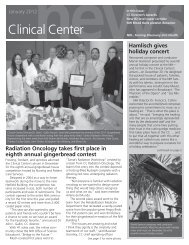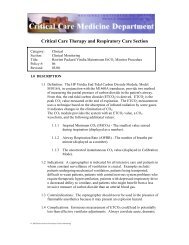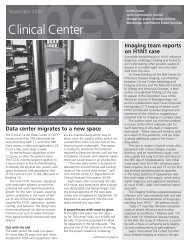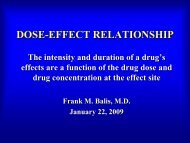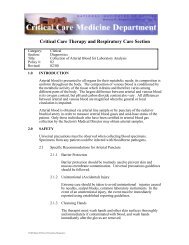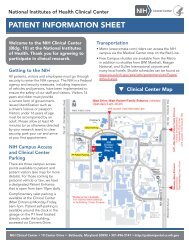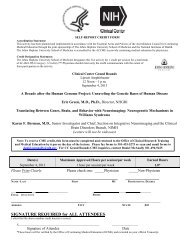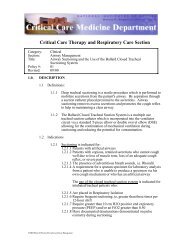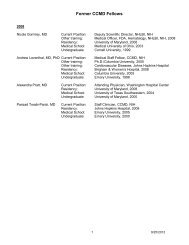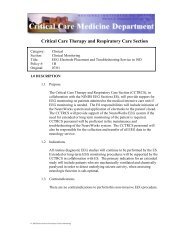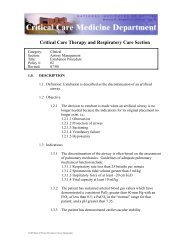2011 - NIH Clinical Center - National Institutes of Health
2011 - NIH Clinical Center - National Institutes of Health
2011 - NIH Clinical Center - National Institutes of Health
Create successful ePaper yourself
Turn your PDF publications into a flip-book with our unique Google optimized e-Paper software.
VOLUNTEER INTERPRETERS HELP STAFF AND PATIENTS BRIDGE LANGUAGE BARRIERSEileen DeSantillana (right) is one <strong>of</strong> more than70 language interpreter volunteers who helppatients like Jaime Sanchez <strong>of</strong> Oaxaca, Mexico,navigate the sometimes complicated journey <strong>of</strong>clinical research. To assure that all patients have afull understanding <strong>of</strong> their involvement in clinicalresearch, and, conversely, to assure that staff havea full understanding <strong>of</strong> what the patient is experiencing,the CC relies on a dedicated staff <strong>of</strong>language interpreters.The program also comprises three staff membersto handle the average <strong>of</strong> 25 (though as high as40) interpreter requests that come in a day. FromAmharic (spoken in Ethiopia) toYiddish, the program<strong>of</strong>fers interpreters in more than 40 languages.Volunteers come in the form <strong>of</strong> former and current<strong>NIH</strong> staff, local retirees <strong>of</strong> such internationalentities as the World Bank and the Pan American<strong>Health</strong> Organization, and medical students orthose who wish to soon be such.“Our volunteersare selfless people who serve with devotionand humanity,” said coordinator Brenda Robles.“They value their experience and show respectto the patients.We admire them and highlyvalue them.”All volunteers are vetted and tested to assure thattheir capabilities match the CC needs, particularlyknowledge <strong>of</strong> medical and legal jargon, Roblessaid. No matter their background, applicants take awritten and an oral test then, if they pass, shadowan interpreter to learn the CC process.Nurse Eleftheria (Libby) Koklanaris <strong>of</strong> the <strong>National</strong>Heart, Lung, and Blood Institute uses the theservice almost daily to interpret for proceduresand consents and to communicate and correspondwith patients and their doctors in their country<strong>of</strong> origin.“Without the Language Interpreter Program andtheir services, it would be challenging to advocatefor the patient’s needs, which does not do justicefor the patients,” Koklanaris said.“They <strong>of</strong>fer manyservices and their endless efforts <strong>of</strong> advocacy andpr<strong>of</strong>essionalism are what make them desired bymany.”ARTIST’S EYESChevy Chase artist Jean Meisel made agenerous donation to the <strong>Clinical</strong> <strong>Center</strong> in2010—13 large works, half <strong>of</strong> which hang inthe Magnuson’s Building new main corridor.Her artist’s statement explains her work:“Everyday <strong>of</strong> our lives we are astounded by the gloriousand mysterious objects and events in thenatural world. In my paintings I isolate shapesand colors and simplify what I see—rocks,leaves, skies, shells—in the hope that the viewer,like the painter, can apprehend these miracleswith new eyes.”ANNUAL REPORT <strong>2011</strong>• 9



